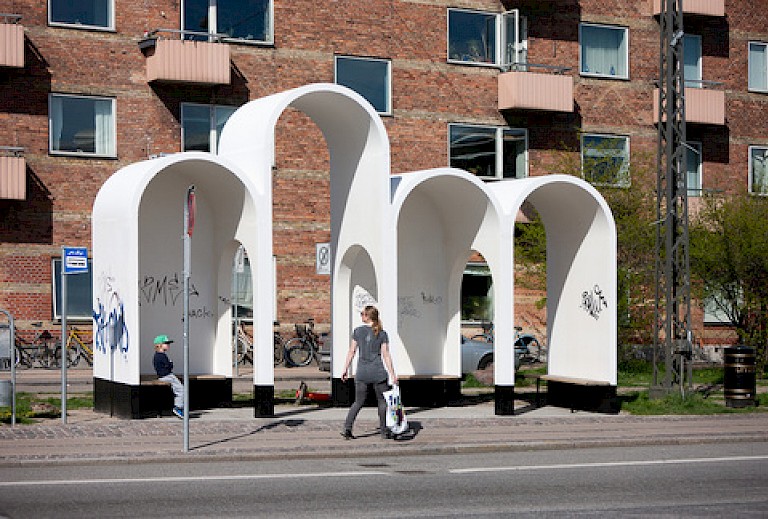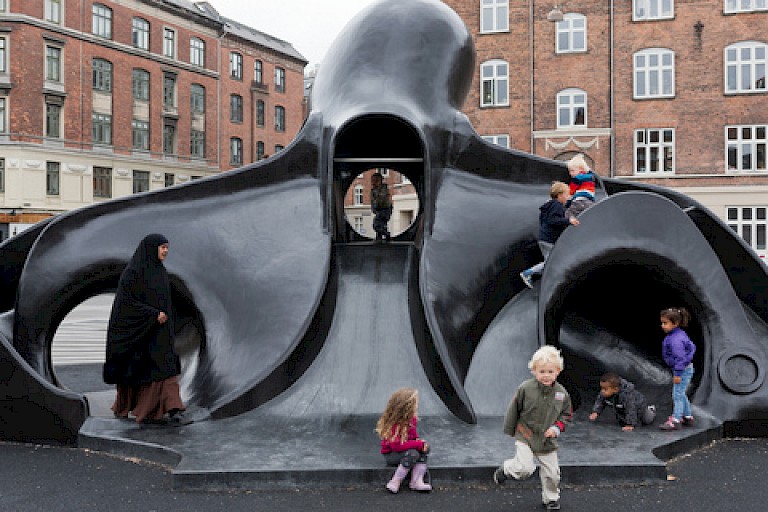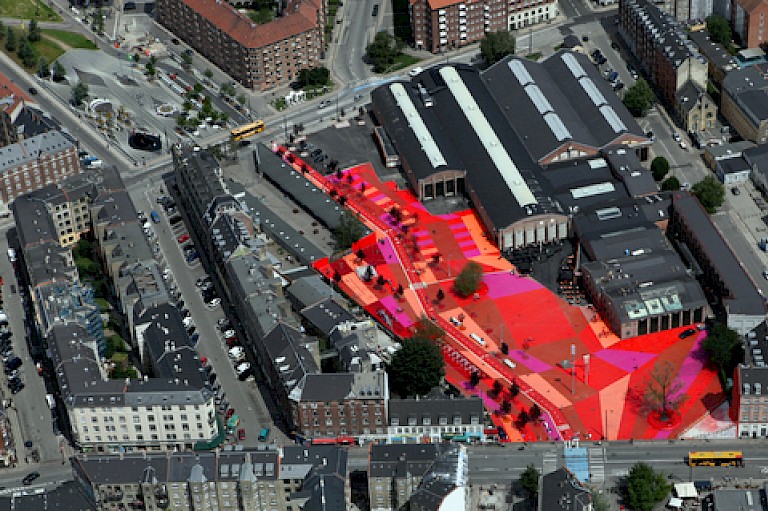



A permanent kilometer-long ‘park,’ Superkilen consists of 3 areas, a “Red Square,” a “Black Market” and “The Green Park” cutting across the neighborhood. It was designed using a participatory methodology, which the artists explain as follows: “The people living in the immediate vicinity of the park relate to more than 50 different nationalities. Instead of using the designated city objects used for parks and public spaces, people from the area was asked to nominate specific city objects such as benches, bins, trees, playgrounds, manhole covers and signage from other countries. The objects were either produced in a 1:1 copy or bought and transported to the site.” 5 groups even travelled to Palestine, Spain, Thailand, Texas and Jamaica to procure 5 of the objects in Superkilen. The result is an instantiation of the concept of a ‘global village’ or ‘museum of civilizations,’ which intends to support the area’s diversity through inclusion of cultural symbols-objects, 108 in total, including neon street lighting from Qatar, a picnic table from Yerevan (Armenia), a South African barbeque or braai, a manhole cover from Tanzania, a gate from Karachi (Pakistan), a bench from Ethiopia, soil from Palestine, a cedar tree from Lebanon, and so on.
Ambitious in scope and scale, the project is commendable for its inclusive approach to urban design as well as its successful realization in 2012. Given that the visual landscapes of most globalized cities in the world rarely (intentionally) reflect the area’s ethnic and cultural composition, Superkilen stands out as a provocative and inspiring experiment, whose wager, that the experiences of inhabitants can be transformed or positively remediated through the intentional (co)design of the visual dimension of everyday city life, seems well-considered and executed.
Ambitious in scope and scale, the project is commendable for its inclusive approach to urban design as well as its successful realization in 2012. Given that the visual landscapes of most globalized cities in the world rarely (intentionally) reflect the area’s ethnic and cultural composition, Superkilen stands out as a provocative and inspiring experiment, whose wager, that the experiences of inhabitants can be transformed or positively remediated through the intentional (co)design of the visual dimension of everyday city life, seems well-considered and executed.
Commissioned by the City of Copenhagen and RealDania.
All copyright belongs to Shanghai Academy of Fine Arts, Shanghai University.



